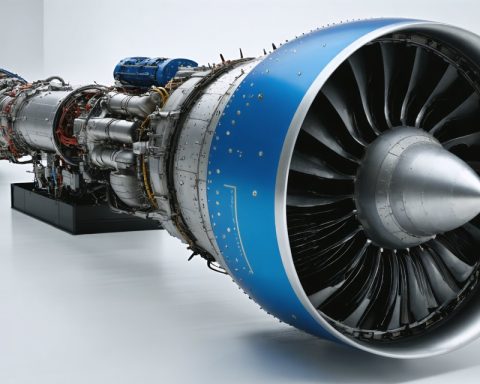- Lario Park poses environmental risks as lithium-ion batteries from electric vehicles are dismantled near vital Los Angeles water sources.
- The Main San Gabriel Basin Watermaster warns of potential groundwater contamination from lead and nickel.
- The scene highlights the environmental challenges posed by the disposal of modern technology.
- Efforts to move battery processing to a safer location, like the Altadena Golf Course, face delays and transparency issues.
- Uncollected water samples and lack of collaboration with the EPA increase tension over environmental precautions.
- The situation underscores the need for careful stewardship of the environment despite technological advancements.
Nestled on the dirt banks of the San Gabriel River, a hazardous scene unfolds at Lario Park where lithium-ion batteries from burned-out electric vehicles are dismantled. This site, a mere stone’s throw from crucial water sources for nearly two million Los Angeles County residents, becomes a potential ticking environmental time bomb.
The Main San Gabriel Basin Watermaster, a vigilant custodian of these subterranean reservoirs, raises red flags about the peril of contaminated drinking water. Every crack and tear in the temporary barrier, separating the toxic metals from the soil, spells a potential catastrophe. Metals such as lead and nickel, experts warn, could seep into the lifeblood of local communities — their groundwater.
Hidden within this chaotic mishmash of debris is a stark reminder of the environmental cost of progress. These batteries, engines of modern life strapped into vehicles, phones, and gadgets, bear a hidden legacy of risk. Once prized for their compactness and power, now they linger as agents of ecological distress.
Efforts to relocate the battery processing to a less precarious pavement chug forward slowly. While the United States Environmental Protection Agency has set its sights on the Altadena Golf Course for the job, the pace and perceived transparency of operations leave room for civic uproar.
As rain washes over the land, carrying whispers of contaminants toward the spreading basins, the tension between precaution and necessity tightens. Water samples remain uncollected by the Watermaster, and an invitation for collaboration extended to the EPA hangs in the ether unanswered.
In this struggle, a poignant truth emerges: As the world gears towards sustainable futures, the stewardship of the past must not falter. Every battery crushed on vulnerable soil echoes a call for vigilance, lest progress pollute what sustains us all.
Lithium-Ion Batteries: The Hidden Environmental Costs and Future Solutions
Controversies & Limitations
Lithium-ion batteries are fundamental to modern technology, powering everything from electric vehicles (EVs) to smartphones. However, their end-of-life management poses significant environmental challenges. Lario Park, as outlined in the source article, illustrates the potential for environmental hazards when batteries are not disposed of properly. Contaminants such as lead and nickel pose substantial health risks if they enter drinking water sources.
Security & Sustainability
Security Concerns: The primary concern with lithium-ion batteries is thermal runaway, leading to fires or explosions. Safe storage and dismantling procedures are crucial to mitigate these risks. This inherent danger underscores the need for secure facilities distant from population centers and critical water sources.
Sustainability Initiatives: Companies and governments are investing in recycling technologies to reclaim valuable materials from batteries while minimizing environmental impact. Current recycling rates for lithium-ion batteries remain low, with only about 5% being recycled globally. The potential for improved recovery techniques is vast, but current methods are both energy-intensive and costly.
Market Forecasts & Industry Trends
According to various industry forecasts, the demand for lithium-ion batteries will continue to rise sharply as EV adoption increases. BloombergNEF predicts that by 2030, electric vehicles will account for over 50% of new car sales globally. Consequently, the need for efficient battery recycling and disposal solutions will be critical.
Emerging trends show a burgeoning interest in alternative battery technologies, such as solid-state and sodium-ion, which promise greater safety and environmental benefits.
Real-World Use Cases
Current Applications: Lithium-ion batteries are predominantly used in electronics and electric vehicles due to their high energy density and long lifespan.
Innovative Approaches: Companies like Redwood Materials and Li-Cycle are pioneering closed-loop recycling systems, striving to reclaim up to 95% of key materials from spent batteries, thus reducing the need for virgin mining.
Reviews & Comparisons
Pros:
– High energy density
– Long lifespan
– Lightweight compared to other types of rechargeable batteries
Cons:
– Risk of fire/explosion if damaged
– Environmental and health risks if not disposed of correctly
– High cost of recycling processes
Insights & Predictions
As sustainable progress continues, it is imperative for stakeholders—including government bodies, private enterprises, and community organizations—to collaborate on safer, more sustainable battery disposal and recycling practices. Projects should focus on rigorous environmental assessments, community engagement, and investment in advanced recycling technologies.
How-To Steps & Life Hacks
For Individuals:
– Properly recycle electronic devices at designated facilities.
– Avoid storing old lithium-ion batteries at home to prevent fire hazards.
For Businesses:
– Partner with certified e-waste recyclers for company-wide initiatives.
– Invest in employee training on the safe handling of battery-powered devices.
Recommended Actions
1. Advocate for stringent regulations on lithium-ion battery waste management.
2. Support companies that prioritize sustainable practices in battery production and recycling.
3. Stay informed about progress in alternative battery technologies and their potential markets.
For more insights into sustainable technology initiatives, visit EPA.
In conclusion, as we navigate the complexities of lithium-ion battery disposal, a collective effort is essential to mitigate environmental threats while fostering innovation for safer and more sustainable energy solutions.








